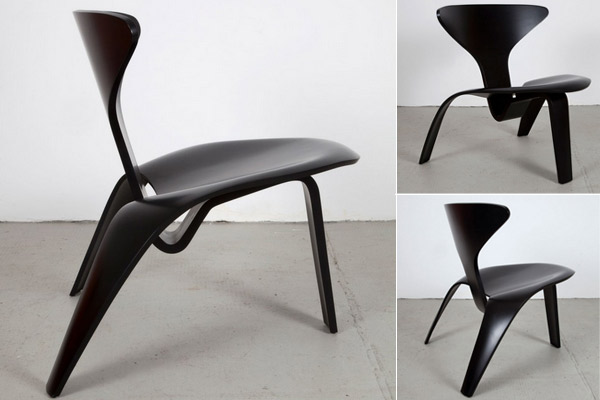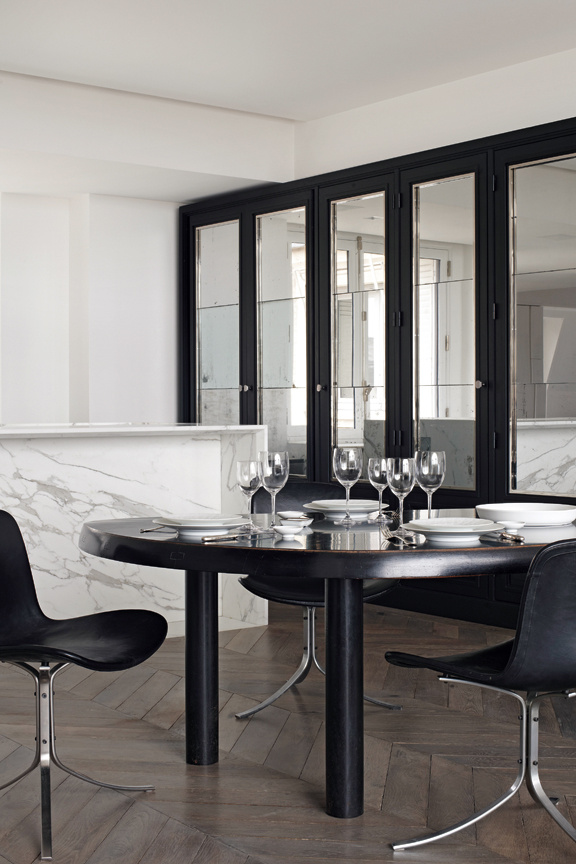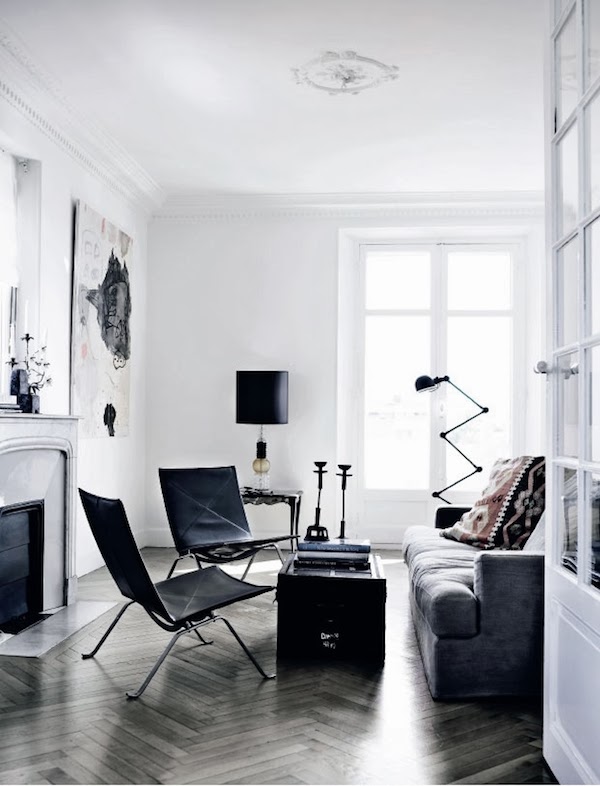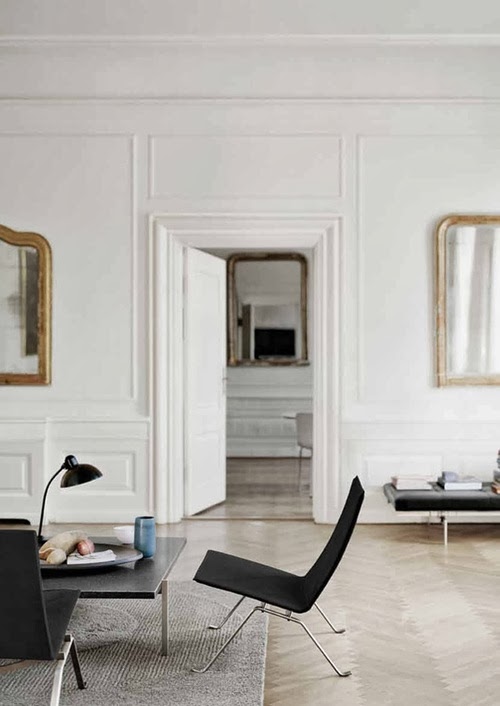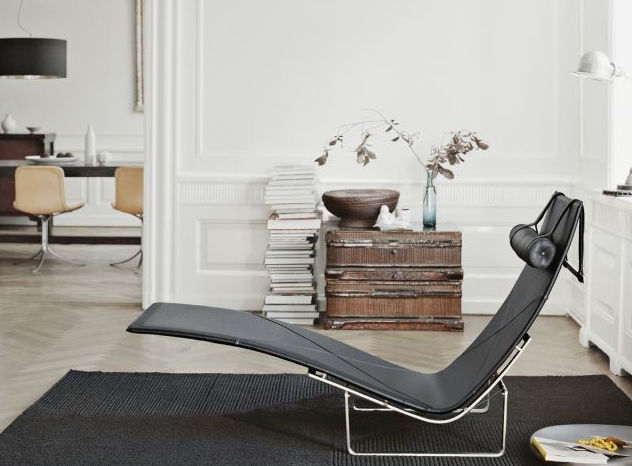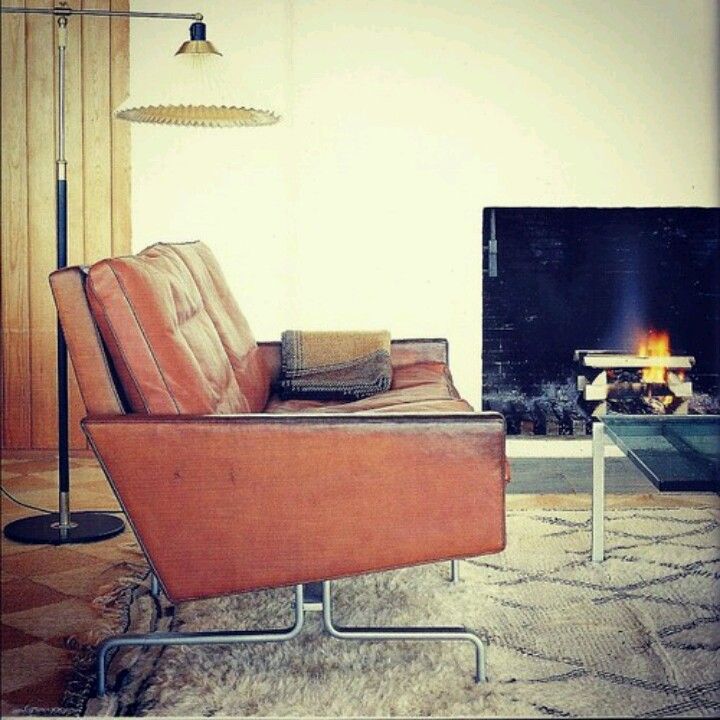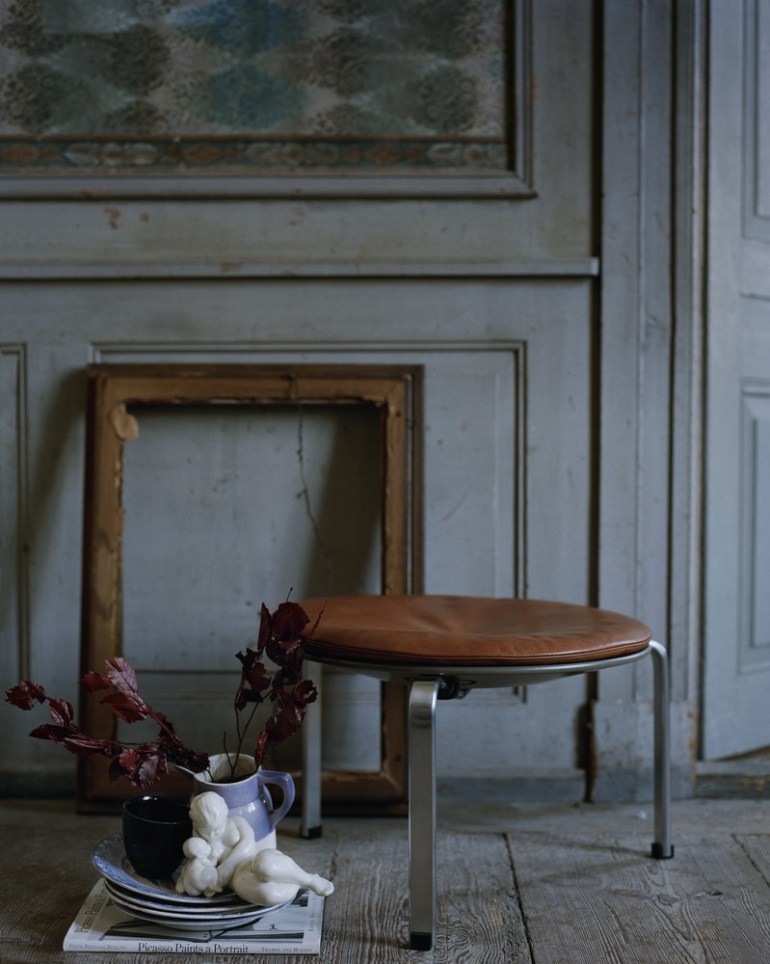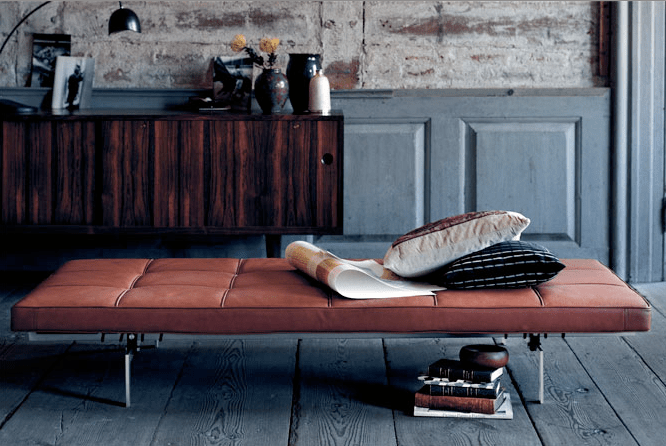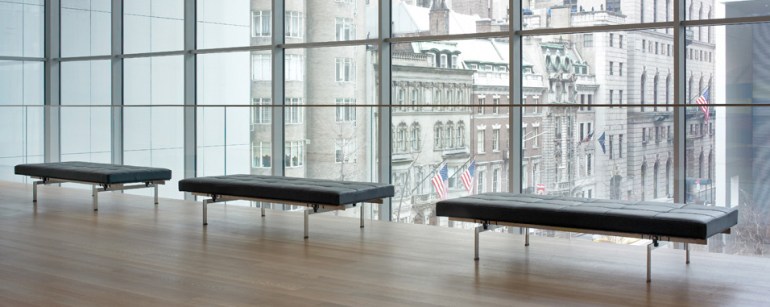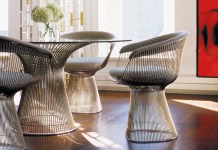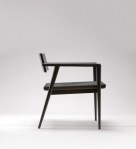 oul Kjaerholm (1929-1980) is the creator of the famous PK22 chair, that elegant minimal structure of steel and leather which we see so often in all those beautiful interiors circulating on the net. This chair, created in 1956, was the big breakthrough for Kjaerholm. Its design won the Grand Prix at the Milan Triennale in 1957 which brought him instant fame. But there is so much more to Kjaerholm’s work.
oul Kjaerholm (1929-1980) is the creator of the famous PK22 chair, that elegant minimal structure of steel and leather which we see so often in all those beautiful interiors circulating on the net. This chair, created in 1956, was the big breakthrough for Kjaerholm. Its design won the Grand Prix at the Milan Triennale in 1957 which brought him instant fame. But there is so much more to Kjaerholm’s work.
Born in Øster Vrå, Denmark in 1929, he was a trained carpenter and cabinet maker. In 1948 he continued his studies at the Danish School of Arts and Crafts in Kopenhagen where he studied under the famous Hans Wegner ( known for the Wishbone Chair amongst others). Kjaerholm graduated in 1952 and subsequently stayed on as a teacher for the next 4 years. In 1953 he married Hanne Hjørring, one of the first female leading architects of her time in Denmark.
Whilst teaching, Kjaerholm also started to make his first designs. Steel was his favourite material. To him this machine-made material had the same qualities as natural materials such as wood, leather, cane, rattan or marble. He loved the refraction of light bouncing off the shiny steel, which he considered an important part of his artistic work. The contradiction of these combined materials gave his furniture pieces a huge WOW factor, a contrast between modernity and age-old craft not seen before.
Based on the Danish tradition where craftsman-like integrity and love of the material take centre stage, each piece of Kjaerholm’s furniture has a genuine feeling of exclusivity. They were crafted with the intention of being functional and unobtrusive. There is perfection and precision whilst giving the impression of being effortless. The clean lines of Kjaerholms furniture are both meticulous and intelligent, lacking any unnecessary ornamentation. Their form has a modern, minimal aesthetic which is timeless and enduring, but which was certainly “new” at the time of creation.
Fortunately, Poul Kjaerholm’s good friend Ejvind Kold Christensen, a Danish entrepreneur and furniture-manufacturer had a deep understanding of Kjaerholm’s intentions. The two struck up a close collaboration, and Christensen produced all of Kjaerholms designs up until his, too early, death in 1980. Items from this period are much sought-after collector pieces today which sell at incredible prices. Since 1982 a wide selection of Kjaerholm’s work is produced by The Republic of Fritz Hansen at more affordable prices.
As you can see from the small impression below, Kjaerholm’s designs fit within any style, be it Mid Century, Rustic, Country Classic, Ethnic, Sophisticated Chic etc.
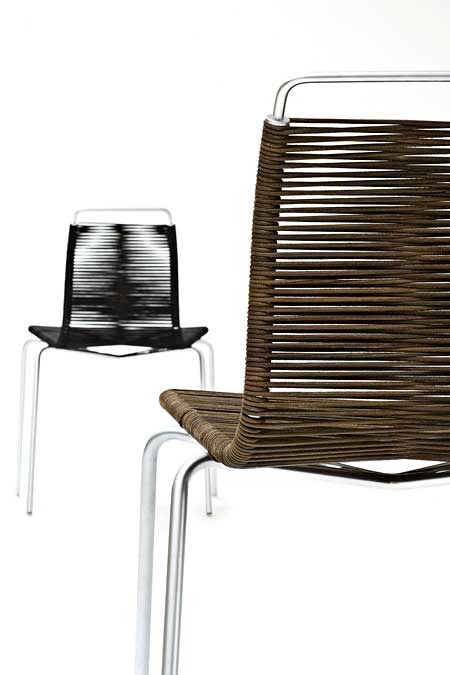
The PK1, a classic chair originally designed in 1956, brought back to the market again by Danish company Thorsen Moebler A-S

The PK20 rocking chair (1967) in a very sophisticated NY apartment, that view! those high windows! – via Tumblr
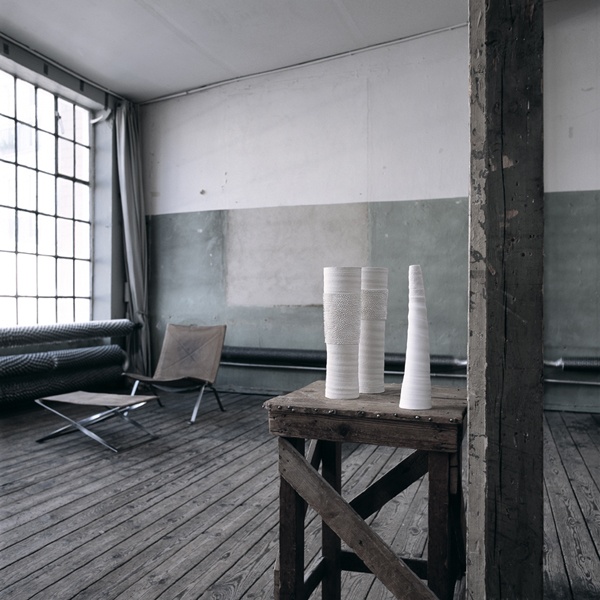
The PK22 chair, here with the PK91 folding stool, a perfect combination – via Scandinavian Collectors
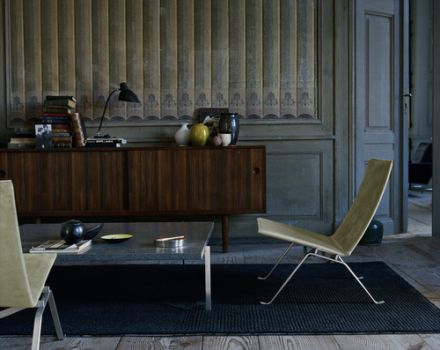
Some more PK22’s, combined with the PK61 coffeetable designed in 1951. Beautiful sideboard in the back with, I think, a Serge Mouille desklamp

Famous French moviestar Catherine Deneuve, muse of YSL, face of Chanel No.5, sitting on the PK22 and photographed by Giancarlo Botti – via The North Elevation
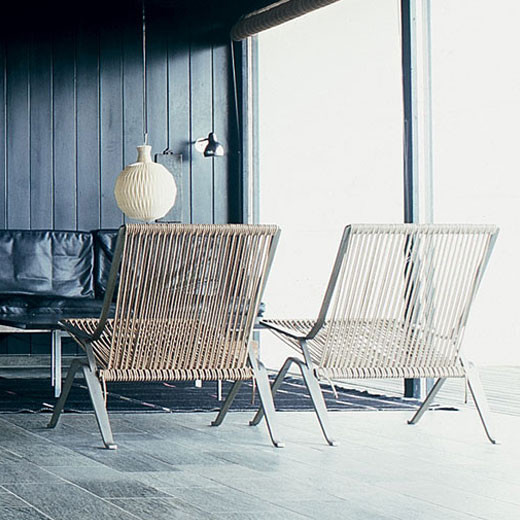
The PK25, a characteristic combination of rope and steel designed in 1952 – via Danish Design Store
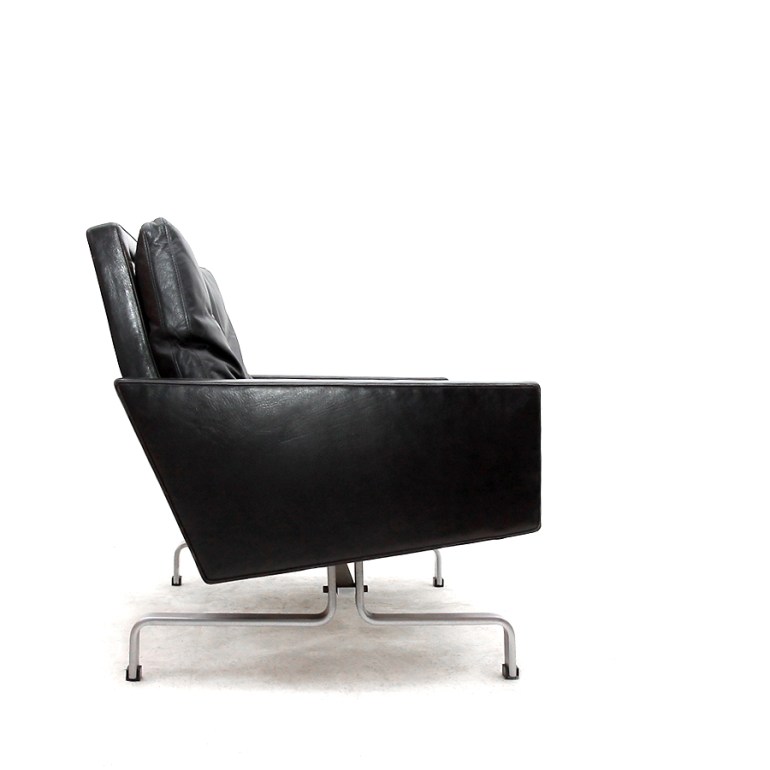
The two-seater from the PK31 series, chrome-plated steel base and downfeather filled leather upholstery, designed in 1958
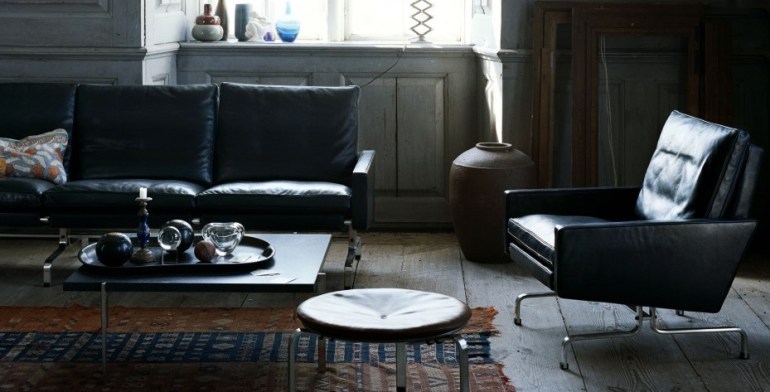
A PK31 one- and three seater combined with the PK61 coffeetables and a PK33 stool – via Republic of Fritz Hansen
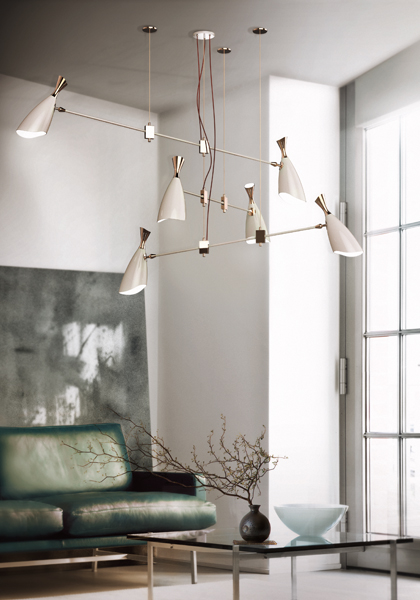
The PK61 coffee table with a Duke suspension lamp by Delightfull
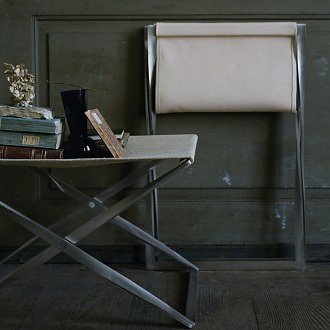
The PK91 folding stool (1961), inspired by the designs of Kjaerholms former teacher, Kaare Klint – via BonLuxat
If you enjoy reading my blog, please consider giving my Facebook page a “like“
YOU MAY ALSO LIKE:
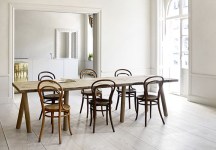 he history of the famous Thonet chairs, begins with Michael Thonet, pronounced "Toe-net" (instead of "Tho-nay"). He was the founder of a building- and furniture workshop in Boppard, Germany in 1819. His unique success story began with the transition of manual furniture production to industrial production. From the 1830's, Thonet…
he history of the famous Thonet chairs, begins with Michael Thonet, pronounced "Toe-net" (instead of "Tho-nay"). He was the founder of a building- and furniture workshop in Boppard, Germany in 1819. His unique success story began with the transition of manual furniture production to industrial production. From the 1830's, Thonet…


